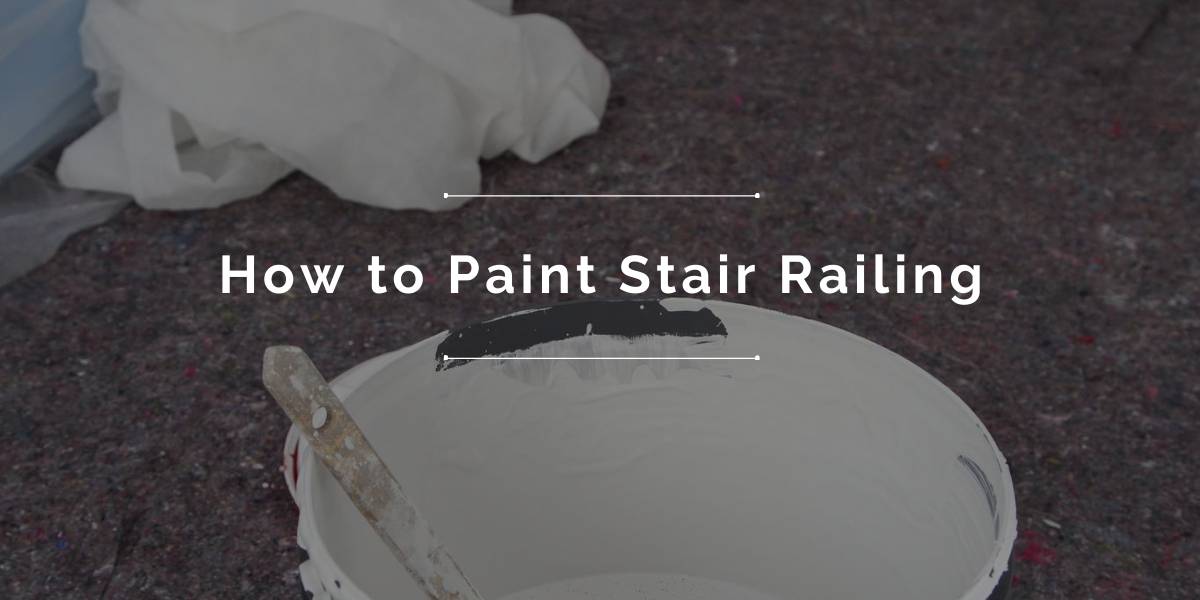Painting a staircase can be done in less than one day! With the right tools, you can have your new railing looking fabulous. Here are some tips for painting your stairs with two coats of primer, followed by two layers of paint.
Prepping Railings and Spindles
Natural wood staircases require more time to prepare because the open wood grain may show through paint without first applying filler. Even then, some cracks and holes might still show through if you don’t apply a brush and roller to push the color into the grain. The smoother the wood is, the more appealing it appears. The use of filler material on top of the surface makes a significant difference in smoothing out the wood and appearing less rough.
Clean. Oil and grime accumulate on stair railings. For the most part, I use Dirtex (powder version in the box) for my woodwork paint preparation, but any pre-paint cleaner will work. At the conclusion, clean all of the railings and spindles with water.
Sand. Use an electric sander or sandpaper for the top of the steps and the rounded edges of railings and spindles. The finest grit sandpaper is recommended. Sand is just enough to reduce the glossy surface reflection.
Mask the floors. Spraying a stairwell necessitates many more masking; nevertheless, even brushing and rolling is messy. Make sure the bases are covered in whatever technique you use. The white Sherwin Williams masking tape works extwell to protect flooring. White tape adheres much better to carpet than other types of tape.
The stair treads should be as close to the wall as possible, and they should also extend into the room. The radius of each step should likewise extend into the space. You can use spray paint for this portion since it will cover everything you need to fix damaged wood at once! If your dog does not sit correctly, perform a function test to determine what surface treatment works best.
Priming and Painting a Staircase Black and White
The ideal primer for coverage and longevity is a solvent-based variety. The most acceptable type of primer to use on an unsanded staircase is a solvent-based polyurethane primer. Staircases are made of wood, so they should be primed with a solvent-based primer.
On the stairwell, I used Zinsser BIN shellac-based primer with my HVLP sprayer. If you’re planning to spray this primer, go for it. Its thick milky viscosity makes brushing or rolling it a significant pain. When brushed and rolled, BIN produces less splatter than Zinsser Cover Stain, an oil-based primer that doesn’t splatter as much as its water-based counterpart.
Spray the primer. Spraying is so much faster than rolling and brushing multiple coats of primer onto hundreds of spindles. Sprayers can have better coverage because they can paint two thin layers, which will result in a smoother surface without having any rough patches where you applied too much pressure with your roller/brush while trying to do with the HVLP sprayer. Also enhanced coverage by using an HVLP (high-volume low-pressure) sprayer; the Graco model I used did not disappoint! I don’t recommend a brush for painting large surfaces, but if you’re doing smaller projects and need the job quickly, I recommend going with an HVLP sprayer. For bigger jobs use airless paints that require a special tip – my favorite is Graco FFLP sprays because they give me great coverage without leaving behind any residue on top of my work!
You can use spray paint or brush on the spindles after spraying two coats of white enamel. If you are painting black railings, make sure to do this step separately from staining the wood because it will change its color entirely! For other colors that are not already set in places like reds and oranges- follow these steps with whatever type of roller/brush suits your needs best for completing them quickly without any mistakes along the way.
After painting the railing, use a 2 1/2 to 3-inch brush on top and sides of each post with medium coverage. A smaller poking tool works best for cutting the paint around individual spindles where they meet underneath since this part can take some time due diligence. Still, there’s no need to worry because if any black gets applied accidentally while doing so only, touch-ups will need to be done at the end!
I like to paint the stairs and railings with floor enamel because it creates a smoother finish. I also recommend using an angled brush rather than roller application for better blending into your natural wood grain or other colors applied over them!
In this article, we have shared with you the best way to paint a staircase. We hope that this information helps when it comes time for your next painting project!






